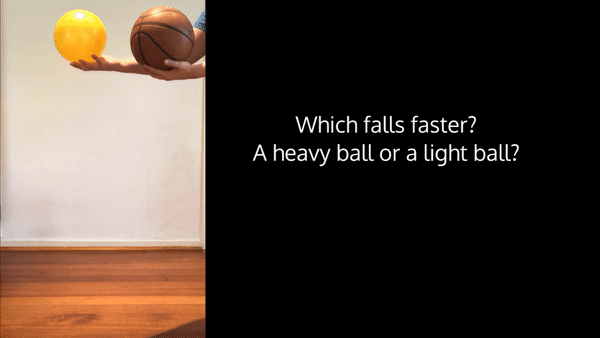If you drop objects that weigh different amounts, which will hit the ground first?
What you need:
- balls that weigh different amounts, eg. basketball, tennis ball
- paper
What to do:
- If you have two balls that are the same, drop them from the same height at the same time. They should hit the ground together (or at slightly different times depending on how well you hold them up to the same height and drop them at the same time).
- Hold one light ball and one heavy ball. Which do you think will hit the ground first? Try it -they should hit the ground at the same time (or close to the same time).
- Try holding up a ball and a piece of paper and dropping them at the same time. Which hits the ground first?
- Scrunch up the piece of paper into a shape similar size to the ball. Try dropping the scrunched paper and the ball. Which hits the ground first this time?
- Try dropping a flat piece of paper and the scrunched piece of paper. What do you see?
What happens
Gravity is the force that causes things to fall to earth. When you drop a ball (or anything) it falls down. Gravity causes everything to fall at the same speed. This is why balls that weigh different amounts hit the ground at the same time. Gravity is the force acting in a downwards direction, but air resistance acts in an upwards direction. The flat piece of paper takes much longer to hit the ground, not because it is lighter, but because it has a larger surface area so it gets caught up by air resistance. When it is scrunched into a ball shape, it should hit the ground at about the same time as a ball, and hit the ground earlier than a flat piece of paper, even though they both weigh the same.
Back to Home Science activities.

